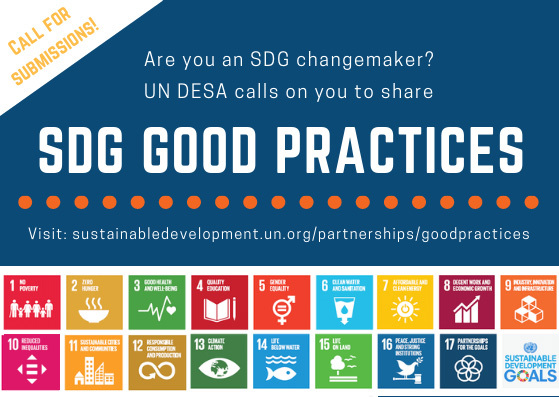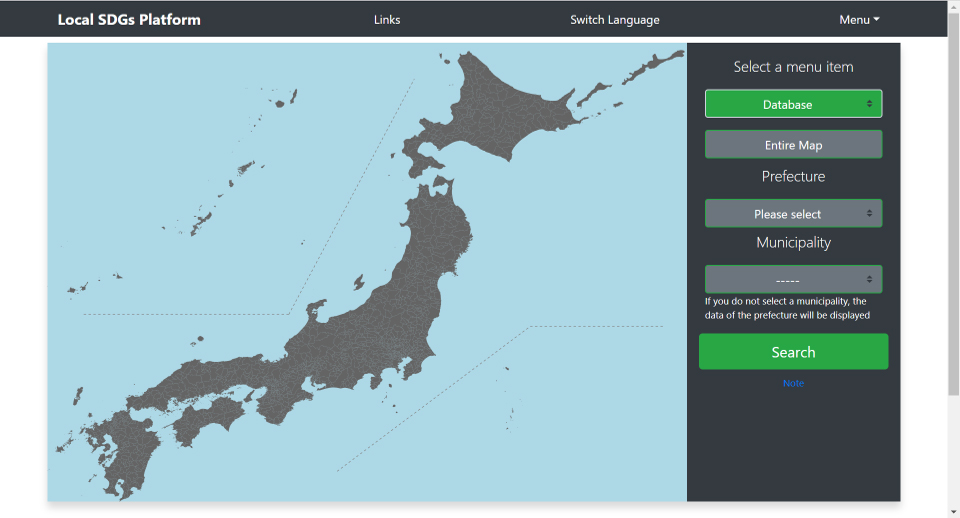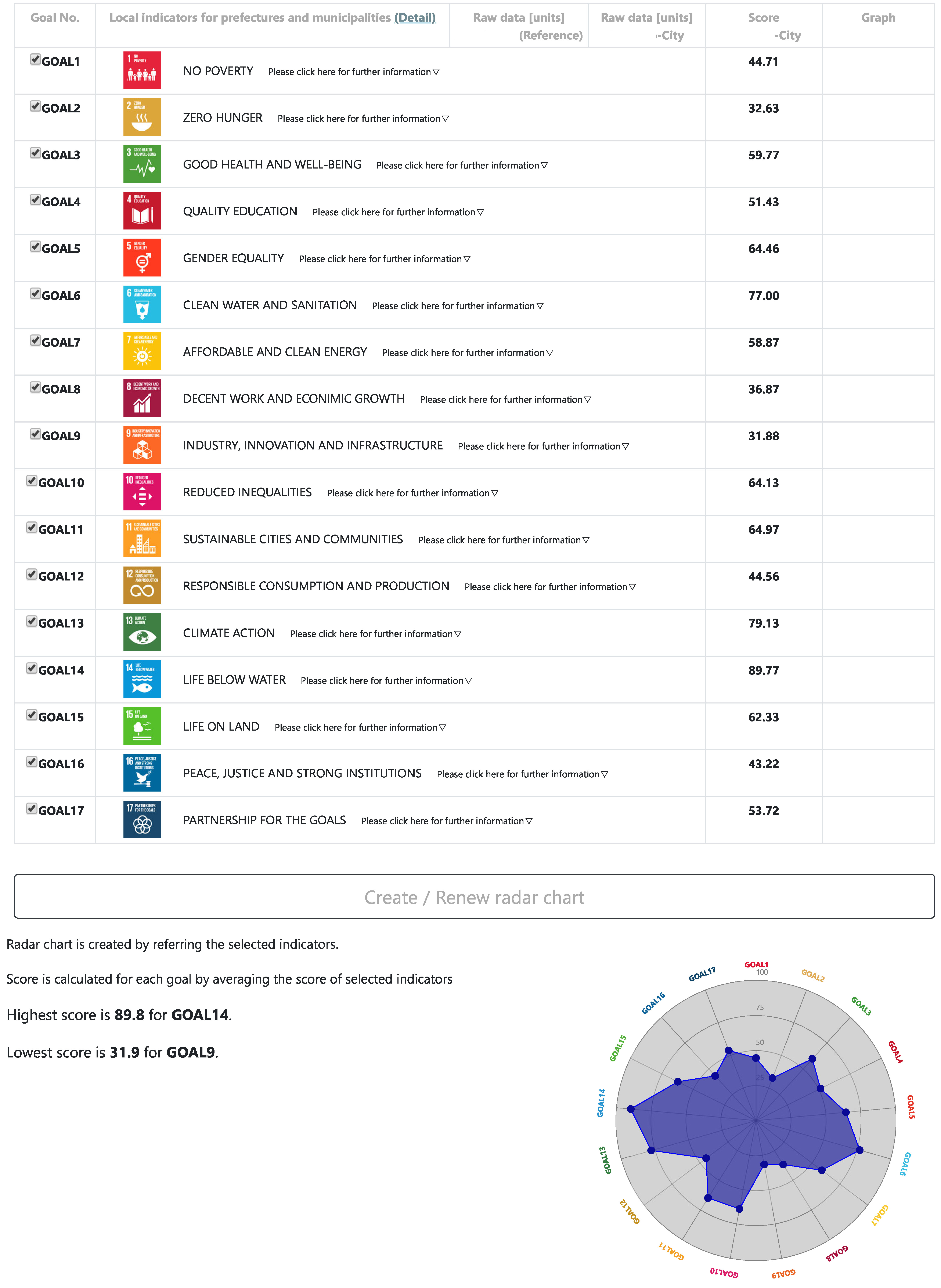Creation of the Local SDG Platform to support efforts by local governments toward achieving the SDGs
Description
Action at the local level by local governments is essential to achieve the 17 Sustainable Development Goals (SDGs) and 169 targets by the target year 2030. One thing needed to promote such action is a database that allows the monitoring of local-level actions and a platform for exchanging information. We therefore developed the online Local SDGs Platform to enable such monitoring and information exchange.
The Local SDGs Platform, which was created to support local-level actions aimed at achieving the SDGs, comprises three main functions. Function 1 (A database to enable monitoring of local-level actions aimed at achieving the SDG): Indicators to measure progress are essential for promoting local-level actions aimed at achieving SDGs. To support integrated activities that incorporate environmental, social, and economic perspectives, we compiled a wide array of information into a database and organized this information according to each of the 17 SDGs. Function 2 (A national map of local governments that have adopted SDG-related policies): Some of the more forward-thinking local governments have developed Local 2030 Agendas or Local SDGs by localizing the 2030 Agenda to match their respective local conditions and circumstances. We created a map compiling examples of such forward-thinking policies by local governments across the country. Function 3 (Interviews with local governments that have adopted forward-thinking SDG policies): The sharing of successful actions is essential for achieving the SDGs. To this end, we conducted interviews with individuals responsible for implementing forward-thinking local-level actions and published these interviews in the form of open-access articles that can be read by the general public.
Over the past decade, we have conducted research (funded in part by national research grants) on efforts by local governments around the country to achieve sustainable development. With the adoption of the 2030 Agenda in September 2015, we began various initiatives to support local-level actions aimed at achieving the SDGs. Realizing that a scheme for monitoring progress toward achieving the SDGs was needed, we developed a series of Local SDG Indicators that were tailored to circumstances and conditions unique to Japan. In addition, we compiled data from national statistics covering all 47 prefectures as well as 1,750 local governments into a local government database. This database enables users to easily query the circumstances of local governments throughout the country, thereby reducing the amount of effort required by local government staff to collect data while supporting efforts by local governments to implement evidence-based policy making.
The principle of “think globally, act locally” is essential if we are to achieve the SDGs by 2030. The 2030 Agenda and SDGs must be localized to match local conditions and circumstances, and local-level actions across the country must be accelerated. To this end, monitoring the current status and visualizing the progress of measures is extremely beneficial; therefore, it is necessary to develop a platform and other tools to make it possible to do so. The Local SDG Platform that was developed enables such monitoring and visualization while contributing to the achievement of the SDGs by providing a means for local governments across the country to share examples of successful actions.
SDGS & Targets
Deliverables & Timeline
Resources mobilized
Partnership Progress
| Name | Description |
|---|---|
| 14.1 | By 2025, prevent and significantly reduce marine pollution of all kinds, in particular from land-based activities, including marine debris and nutrient pollution |
| 14.2 | By 2020, sustainably manage and protect marine and coastal ecosystems to avoid significant adverse impacts, including by strengthening their resilience, and take action for their restoration in order to achieve healthy and productive oceans |
| 14.3 | Minimize and address the impacts of ocean acidification, including through enhanced scientific cooperation at all levels |
| 14.4 | By 2020, effectively regulate harvesting and end overfishing, illegal, unreported and unregulated fishing and destructive fishing practices and implement science-based management plans, in order to restore fish stocks in the shortest time feasible, at least to levels that can produce maximum sustainable yield as determined by their biological characteristics |
| 14.5 | By 2020, conserve at least 10 per cent of coastal and marine areas, consistent with national and international law and based on the best available scientific information |
| 14.6 | By 2020, prohibit certain forms of fisheries subsidies which contribute to overcapacity and overfishing, eliminate subsidies that contribute to illegal, unreported and unregulated fishing and refrain from introducing new such subsidies, recognizing that appropriate and effective special and differential treatment for developing and least developed countries should be an integral part of the World Trade Organization fisheries subsidies negotiation |
| 14.7 | By 2030, increase the economic benefits to Small Island developing States and least developed countries from the sustainable use of marine resources, including through sustainable management of fisheries, aquaculture and tourism |
| 17.14 | Enhance policy coherence for sustainable development |
| 14.a | Increase scientific knowledge, develop research capacity and transfer marine technology, taking into account the Intergovernmental Oceanographic Commission Criteria and Guidelines on the Transfer of Marine Technology, in order to improve ocean health and to enhance the contribution of marine biodiversity to the development of developing countries, in particular small island developing States and least developed countries |
| 14.b | Provide access for small-scale artisanal fishers to marine resources and markets |
| 14.c | Enhance the conservation and sustainable use of oceans and their resources by implementing international law as reflected in United Nations Convention on the Law of the Sea, which provides the legal framework for the conservation and sustainable use of oceans and their resources, as recalled in paragraph 158 of "The future we want" |
Feedback
Action Network


Timeline
Entity
Region
- Asia and Pacific
Geographical coverage
Photos


Website/More information
Countries

Contact Information
Shun Kawakubo, Associate Professor
